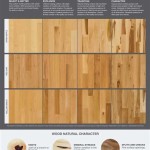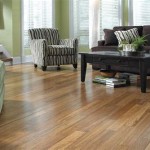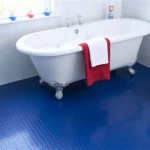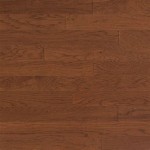Mid-Century Modern Flooring: A Comprehensive Guide
Mid-century modern design, a style characterized by its sleek lines, organic shapes, and emphasis on functionality, enjoyed peak popularity from the mid-1940s to the mid-1960s. Flooring played a crucial role in defining the aesthetics of these spaces, contributing significantly to the overall feel of a home. Understanding the characteristics and options available for mid-century modern flooring is essential for anyone seeking to authentically recreate or incorporate this iconic design style into their interiors.
The flooring choices of this era reflected a shift away from the ornate and often fussy styles of previous decades. Simplicity, clean lines, and natural materials were highly valued. The emphasis was on creating bright, open spaces that were both aesthetically pleasing and practical for modern living. A variety of materials became popular, each offering distinct visual and functional benefits.
Key Flooring Materials in Mid-Century Modern Design
Several specific materials were prominently featured in mid-century modern homes. Each offered unique characteristics that contributed to the overall design aesthetic.
Hardwood Flooring: Hardwood flooring, particularly in light and medium tones with a natural finish, was a ubiquitous choice. Oak, maple, and birch were common wood types. The emphasis was on showcasing the natural grain and warmth of the wood. Hardwood was often installed in long, linear planks, creating a sense of continuity and flow within the space. Wall-to-wall carpeting was less common in earlier interpretations of the style, with area rugs being used to define specific zones within a room and add visual interest. The use of a clear, protective coating was preferred to heavy varnishes, preserving the natural appearance of the wood.
Parquet flooring, arranged in geometric patterns such as herringbone or chevron, was also a popular option. This added a more decorative element to the flooring, providing visual interest and a touch of sophistication while still adhering to the principles of clean lines and geometric forms characteristic of the era. Maintenance was generally straightforward, with regular sweeping and occasional polishing to maintain the wood's luster.
Vinyl Flooring: Vinyl flooring experienced a surge in popularity during the mid-century modern period due to its affordability, durability, and water resistance. It also offered a wide range of design possibilities, from solid colors to intricate patterns. Sheet vinyl was commonly used in kitchens and bathrooms, providing a practical and easy-to-clean surface. Patterns mimicking natural materials like wood or stone were also prevalent.
The introduction of vinyl composition tile (VCT) further broadened the design options. VCT allowed for the creation of custom patterns and designs through the arrangement of individual tiles. This offered homeowners a high degree of personalization while still maintaining the benefits of vinyl's durability and ease of maintenance. VCT remains a viable option today, particularly for those seeking an authentic recreation of mid-century modern homes.
Terrazzo Flooring: Terrazzo, a composite material consisting of marble chips set in a binder such as concrete or epoxy, was another popular choice, particularly for high-traffic areas. Terrazzo floors are known for their durability, longevity, and unique aesthetic appeal. The speckled appearance created by the exposed marble chips added visual texture and interest to the flooring.
Terrazzo could be customized with a wide range of colors and aggregate sizes, allowing for creative design possibilities. It was often used in entryways, hallways, and kitchens, providing a durable and visually striking surface. While terrazzo installation can be more complex and costly than other flooring options, its long lifespan and low maintenance requirements made it a worthwhile investment for many homeowners.
Cork Flooring: Cork flooring, with its natural warmth and texture, aligned well with the mid-century modern emphasis on natural materials. Cork is also known for its acoustic properties, providing sound insulation and creating a quieter indoor environment. Its resilience underfoot made it a comfortable flooring choice for living areas and bedrooms.
Cork flooring was typically available in tiles or planks, and could be stained or sealed to achieve different looks. Its natural variations in color and texture added visual interest to the flooring, while its sustainable properties resonated with the growing awareness of environmental concerns during the era. Although not as widely used as hardwood or vinyl, cork flooring offered a unique and eco-friendly option for mid-century modern homes.
Characteristics of Mid-Century Modern Flooring Design
Beyond the specific materials used, certain design principles guided the selection and installation of flooring in mid-century modern homes.
Clean Lines and Minimalism: The emphasis was on simplicity and clean lines. Cluttered or overly ornate patterns were generally avoided. Flooring choices were often chosen to complement the clean lines of the furniture and architectural details. Solid colors, simple geometric patterns, and natural wood grains were favored over intricate designs.
This minimalist approach extended to the installation methods as well. Seamless transitions between rooms were often preferred, creating a sense of continuity and flow. Borders and elaborate patterns were generally minimized, allowing the flooring to blend seamlessly with the overall design aesthetic.
Emphasis on Natural Materials: Natural materials like wood, stone, and cork were highly valued. These materials were seen as authentic and visually appealing, and they helped to create a warm and inviting atmosphere. The natural imperfections and variations in these materials were often celebrated, adding character and depth to the flooring.
The use of natural materials also reflected a growing appreciation for the environment and a desire to connect with nature. This trend was evident not only in flooring choices but also in other aspects of mid-century modern design, such as the incorporation of indoor plants and the use of large windows to maximize natural light.
Integration of Color and Pattern: While minimalism was a key principle, color and pattern were not entirely absent from mid-century modern flooring. Bold, geometric patterns were often used in vinyl flooring and area rugs to add visual interest and personality to a room. Bright, saturated colors were also popular, particularly in accent pieces and accessories.
The key was to use color and pattern strategically, avoiding overwhelming the space. A solid-colored floor might be paired with a bold area rug, or a simple geometric pattern might be used to define a specific zone within a room. The overall effect was one of balance and harmony, with color and pattern used to enhance, rather than detract from, the minimalist aesthetic.
Considerations for Recreating Mid-Century Modern Flooring Today
When recreating mid-century modern flooring designs in contemporary homes, it is important to consider both the aesthetic and functional aspects of the original style while also incorporating modern technologies and materials.
Material Selection: While authentic materials like hardwood, vinyl, and terrazzo remain viable options, modern alternatives offer enhanced durability, sustainability, and ease of maintenance. For example, engineered hardwood flooring provides the look and feel of solid hardwood with improved resistance to moisture and warping. Luxury vinyl plank (LVP) offers a realistic wood or stone appearance with exceptional durability and water resistance. Modern terrazzo options utilize epoxy binders, which are lighter and more flexible than traditional concrete binders.
When selecting materials, it is important to consider the specific requirements of each room and the overall design aesthetic. Hardwood or LVP might be suitable for living areas and bedrooms, while vinyl or terrazzo might be a better choice for kitchens and bathrooms. The color and texture of the flooring should complement the other design elements in the room, such as furniture, paint, and accessories.
Installation Techniques: Modern installation techniques can improve the performance and longevity of mid-century modern flooring. For example, floating floors, which are not directly attached to the subfloor, can provide improved sound insulation and resistance to moisture. Underfloor heating systems can enhance the comfort of hardwood or tile floors during colder months. Proper subfloor preparation is essential for ensuring a level and stable surface, which is particularly important for materials like vinyl and terrazzo.
It is also important to consider the environmental impact of the installation process. Using low-VOC adhesives and finishes can minimize off-gassing and improve indoor air quality. Recycling old flooring materials and choosing sustainably sourced materials can reduce the environmental footprint of the project.
Design Considerations: When recreating mid-century modern flooring designs, it is important to maintain the key characteristics of the style, such as clean lines, minimalism, and an emphasis on natural materials. However, it is also possible to incorporate modern design elements and personal preferences. For example, a contemporary color palette might be used to update a classic mid-century modern pattern. A mix of materials, such as hardwood and tile, can be used to create visual interest and define different zones within a room.
Ultimately, the goal is to create a space that is both aesthetically pleasing and functional for modern living. By carefully considering material selection, installation techniques, and design considerations, it is possible to successfully recreate the timeless appeal of mid-century modern flooring in contemporary homes.

Mid Century Modern Floor Ideas To Transform Your Space Instantly Cliccdesign

Best Mid Century Modern Flooring Options To Fit Your Style Inc

Flooring 101 Materials Galore For A Just Right Retro Floor Atomic Ranch

Best Mid Century Modern Flooring Options To Fit Your Style Inc

Flooring 101 Materials Galore For A Just Right Retro Floor Atomic Ranch

Best Mid Century Modern Flooring Options To Fit Your Style Inc

Mid Century Modern Floor Ideas To Transform Your Space Instantly Cliccdesign

Why So Many Including Us Are Obsessed With Mid Century Modern Design New Generation Home Improvements

Stunning Spectacular 1961 Mid Century Modern Time Capsule House In Minnesota 66 Photos Retro Renovation Living

Best Mid Century Modern Flooring Options To Fit Your Style Inc
Related Posts








